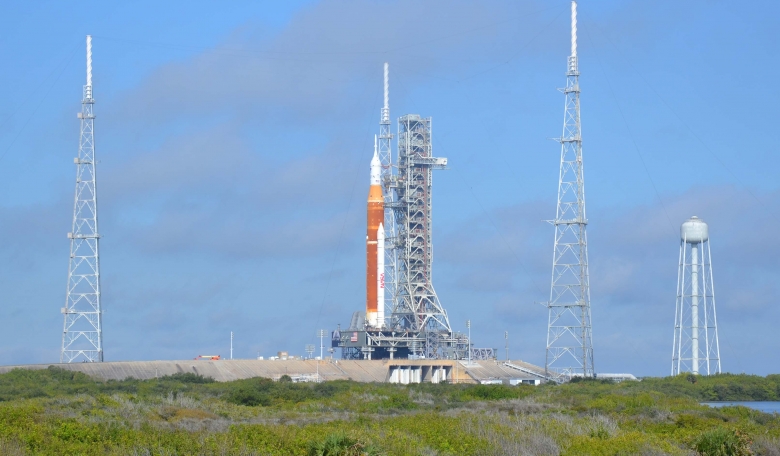There was excitement and anticipation at NASA’s KSC press site in Florida this week as the agency’s Space Launch System (SLS) rocket with Orion spacecraft atop arrived at Launch Pad 39B in preparation for a final test before its Artemis I Moon mission.
I was among 300 media people on site for this momentous occasion and in scenes I had not witnessed since the final Space Shuttle mission in 2011, the giant crawler made is way slowly from the VAB carrying the fully stacked SLS to the famous launch pad.
Ahead of NASA’s Artemis I uncrewed flight test later this year, SLS will undergo a wet dress rehearsal to verify systems and practice countdown procedures for the first launch.
“From this sacred and historical place, humanity will soon embark on a new era of exploration,” said NASA administrator Bill Nelson. “Artemis I will demonstrate NASA’s commitment and capacity to extend humanity’s presence on the Moon – and beyond.”
Stacked on the mobile launcher and mounted on the crawler-transporter for a journey from the Vehicle Assembly Building to Launch Pad 39B, it took 10 hours and 28 minutes for SLS and Orion to reach the launch pad four miles away.
The trip began at 17:47 local time on Thursday (17 March) and the 322-foot tall, 3.5-million-pound rocket and spacecraft arrived at the pad in the early hours of 18 March at 04:15 am.
The upcoming test will run the Artemis I launch team through operations to load propellant into the rocket’s tanks, conduct a full launch countdown, demonstrate the ability to recycle the countdown clock, and also drain the tanks, to practice the timelines and procedures the team will use for an actual launch.
Before the test, SLS, Orion, and the associated ground systems will undergo checkouts at the pad. After the rehearsal, NASA will review data from the test before setting a specific target launch date for the upcoming Artemis I launch.
The integrated rocket and spacecraft will roll back to the Vehicle Assembly Building several days after the test to remove sensors used during the rehearsal, charge system batteries, stow late-load cargo, and run final checkouts. Orion and SLS will then roll to the launch pad for a final time about a week before launch.
With Artemis, NASA will establish long-term exploration at the Moon in preparation for human missions to Mars. SLS and NASA’s Orion spacecraft, along with the human landing system and the Gateway in orbit around the Moon, are NASA’s foundation for deep space exploration.
Rocket roll time for NASA’s new Moonshot











